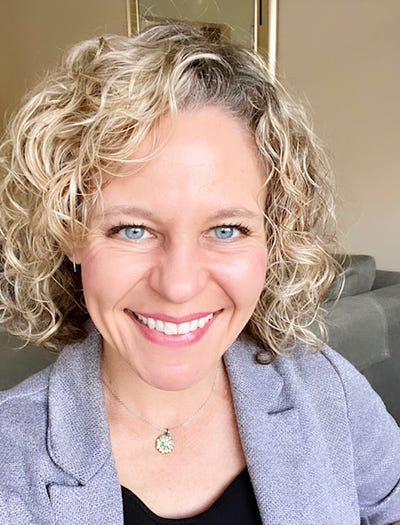CGA CEO: In a 'Scary, Scary Time,' Hope for the Grocery Industry in 2021CGA CEO: In a 'Scary, Scary Time,' Hope for the Grocery Industry in 2021
California Grocers Association's Ronald Fong on COVID-19 vaccine rollout in grocery stores, lessons from 2020. California Grocers Association's Ronald Fong prides himself on being a coalition builder. Never has that role mattered more than this year.

Ronald Fong has served since 2008 as president and CEO of the California Grocers Association (CGA), which counts more than 300 retailers and 150 grocery supply companies among its membership. In April, Fong was appointed to California Gov. Gavin Newsom's bipartisan, 80-member Task Force on Business and Jobs Recovery, and on Dec. 16, he was named to the California Department of Public Health Community Vaccine Advisory Committee. He spoke with Winsight Grocery Business about where the grocery industry stands at a moment of, simultaneously, record-setting new cases of and deaths from COVID-19 in California and the start of distribution of a long-awaited COVID-19 vaccine.
Christine LaFave Grace: How are things looking from your desk right now? How does that differ from where we were three months ago?
Ronald Fong: That’s a great question because as we sit here on Dec. 17, it has changed drastically, and not for the better, even from three months ago. Today, we are dealing with everything that’s in the news headlines, and that is our largest cases of COVID in our entire nation. We’ve got 98% of our population in California under the most restrictive zones of our stay-at-home order, and that’s because our ICU beds are below the 15% mark. (Editor's note: On Dec. 17, ICU capacity in an 11-county region in Southern California fell to 0%.)
It is a scary, scary time even with grocery. Because if you think about it, grocery employees are families just like everybody else. And our employees have socialized over Thanksgiving and gathered and so there are cases that we cannot ignore in the grocery marketplace, just like there are everywhere else. And so it really is intense. I think we will get through it, if people learn from the lessons of Thanksgiving and Halloween and not repeat that behavior at Christmas, I think we’re going to get through it quicker. But it’s really incumbent on everybody, including our employees, to be responsible and know that not gathering with family members or across families is a temporary solution just to get us through the next months.
It's one day, one week, one holiday season.
Yes. Three weeks can change in a minute if people change their behavior. From an operational standpoint, we have ramped everything up, our stores. We’re redoubling efforts to clean, to take all of the precautions like social distancing. One of the latest issues that we have faced is the capacity limits in grocery stores. So that just got settled last week, that was from direct negotiation from CGA and the governor’s office. We wanted to be responsible and say, “Hey, we agree with you, governor, we don’t want crowded stores.” So we agreed that 35% capacity in grocery stores. That’s different than the 20% in retail stores, and that’s because our stores are bigger boxes, and we can handle a bigger volume. Our argument to the governor was, “You really don’t want people standing in line outside of your grocery store. We have enough room; we’ve proven that we can do it safely. Give us 35% and we can live with that.”
I think it really is a coalition because there’s not one answer. What we’ve found ourselves doing is to make responsible decisions. It’s one thing for grocery to say, we want a higher capacity limit and we’re different from clothing stores and whatnot. But we have to keep in mind that the governor and the state of California—our nation, really—we have a real problem. And we have to kind of step back and say, yes, this is going to affect grocery, but we need to protect our customers and our employees. It’s a coalition vs. sort of an aggressive lobbying stance [that] we would normally take in, say, fighting a bill that was just introduced. We really have to be responsible citizens and partners, coalition builders, with everybody in the state to operate our stores safely.
What, in your perspective, gets overlooked or missed in the course of conversations about the industry right now? Are there things you think people don't realize?
I think a common misperception in the media is that grocery stores are so busy that we are having record profits. And because we are having record profits, we’re not taking care of our customers or our employees, and it is the complete opposite. Yes, we are busy, because some of the normal food suppliers like restaurants have had to shut down. If you think about it, roughly 50% of our population get their daily food from restaurants, and 50% get from grocery stores. When the state shuts down restaurants, guess what happens? Everything funnels to the grocery store, right? We have not necessarily prepared for that kind of volume. We can’t wait for it to go back to normal and for restaurants to take their share, to be honest with you. But the perception from the media is that we’re [seeing] record profits. They don’t understand that we have put together all of these protocols that are really expensive. And that is, supplying all of our employees with PPE at our own cost.
If you think about a store, just with 75 to 100 employees having to change their mask every few hours, [having] hand sanitizers, hand-washing stations at the front of the store, those plexiglass barriers at each of our check stands. We need to have a dedicated employee that sanitizes every 15 minutes to 30 minutes at our check stands; we need to have a monitor at the door so we don’t take [in] over our capacity. Our cleaning protocols have quadrupled—not just doubled, quadrupled. We do a deep cleaning at the end of every day. All of this costs a tremendous amount of money. So, yes, our volume seems like it’s high, but the misperception and the thing that people don’t understand is that we’re going to great expenses to keep everybody safe.
Looking back on this year in a different light, do you have any favorite examples of innovation that you’ve seen?
What comes to mind is the change in delivery and e-commerce is just incredible. Pre-pandemic, online grocery shopping was somewhere near 3% to 5%. It’s now close to 20%. And it makes complete sense, and we love that, because less people in the stores. Our stores have been really busy with either curbside pickup or delivery. That technology is just incredible and really come around and surprised us a little bit.
What lessons will grocers take from 2020—about flexibility, supply chain or even communication and collaboration—that can apply in any environment?
Resilience I think is the word. Resilience is the word that grocers have focused on. All of our worlds have changed. Grocery happened to be an industry that has been able to stay open through the pandemic, but we’re not the same people that we were pre-pandemic. We have had to do so much shifting, so much change, whether it is dealing with teaching people not to overbuy—that was at the beginning of the pandemic—to ensure our staff that it’s safe to come to work. Because they’re family people as well, and they’re scared. Front-line workers, they’re taking a chance. We put all this time and thought into making it a safe environment to come to work and for people to come into our grocery stores. I think they have been resilient in all of that and been able to shift their focus and their operations from pre-pandemic to dealing with something that we know is going to go away next summer or shortly after next summer, and they have just done a remarkable job through all of that.
Does CGA have an official position on the vaccine—on either making it mandatory or petitioning for early access to it for the industry’s workforce?
I’m going to give you the scoop: I was just named on the state’s vaccine task force. That happened because of what you just said—we need to coordinate and figure out a way where grocery workers and our supply chain workers are a priority to get the vaccine. I think the state agrees with us. We’re “1B” in line behind healthcare workers, but we have not yet figured out the safest way to vaccinate our employees. So we’re working through all of that through the task force now. It’s going to be intense for the next three weeks, but the mission for me is to figure out a way where our pharmacies can vaccinate not just grocery store workers but our communities at large when it’s their turn. Grocery workers, supply chain, food and agriculture workers will be 1B; we want to make sure that they’re high priority, and I’m advocating and reminding people of that. The state of California and actually the CDC has agreed as well that we should be right behind healthcare workers. And now our challenge will be, “OK, now how do we safely do this?” We’re putting together processes for how to prioritize even people within the grocery store—you think about how many people work [there], there’s got to be a priority system of even among people within the stores.
If I check in with you a year from now, what are you going to look forward to talking about?
A year from now, hopefully, our state will be confident enough to be back to a more normal shopping pattern at grocery stores, and we will be able to gather for grocery conferences that are really important to CGA—we have our big conference usually in September of every year—and go back to doing business the old-fashioned way. Grocery stores are still a people-to-people business. Our buyers like to get together with suppliers and talk face to face. I think a year from now we’ll be back to that pattern.
About the Author
You May Also Like






